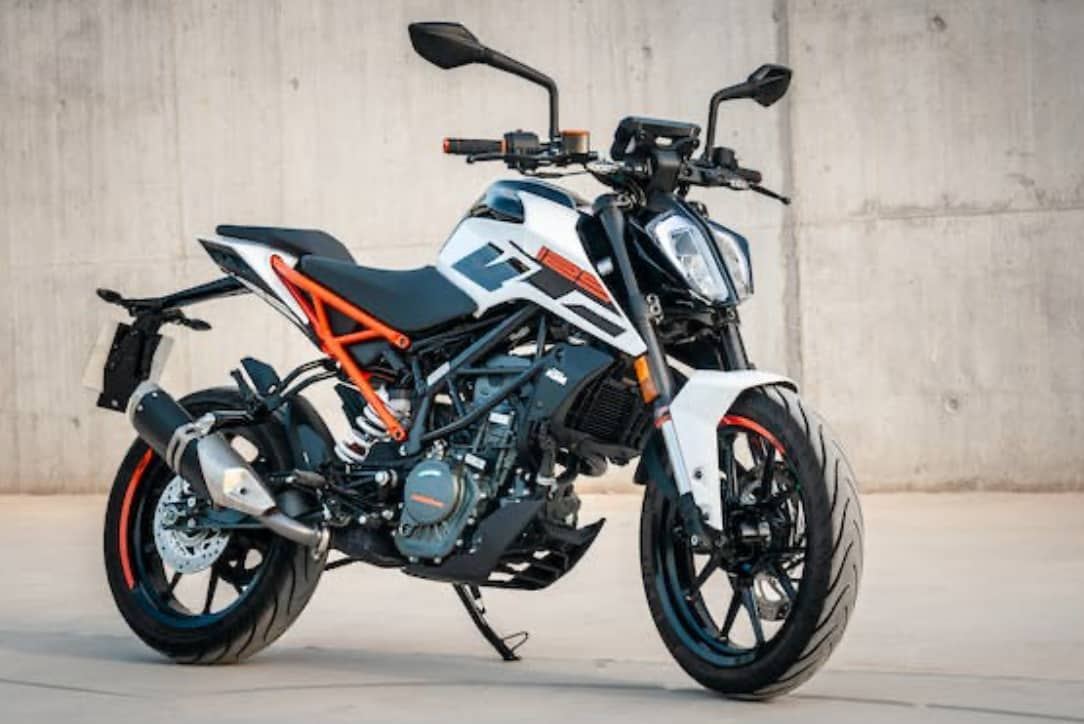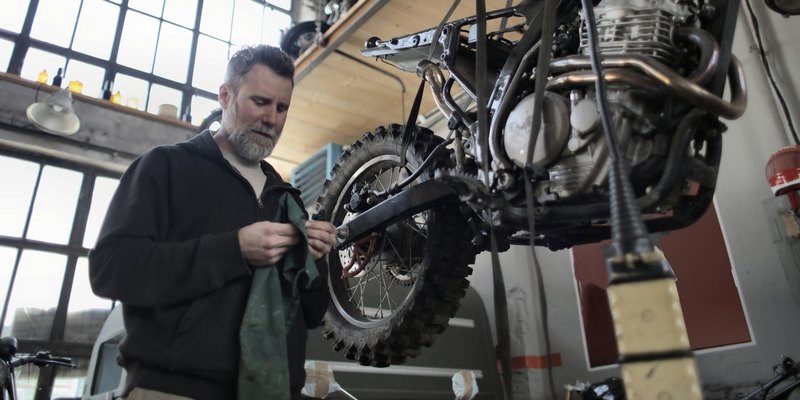Ninja 400 Top Speed: Accelerate Your Adventure

The strategic introduction of Kawasaki’s Ninja 400 in 2018 reflected a purposeful response to the changing landscape of motorcycle learner laws and the intensified competition within the small-capacity sportbike segment. This marked a notable evolution from its predecessor, the Ninja 300, and was positioned as a direct answer to Yamaha’s YZF-R3, illustrating Kawasaki’s commitment to remaining at the forefront of innovation and performance.
The decision to transform the Ninja 300 into a big-bore version served a dual purpose: to align with evolving regulations and to counter competitors providing faster and more powerful alternatives. The Ninja 400 underwent a transformative journey, elevating its engine capacity from 296 cc to a robust 399 cc, translating to a remarkable 35% increase in size compared to its predecessor.
Despite the structural similarities with the Ninja 300, the engine witnessed a substantial surge in power, boasting a peak claimed power of 49 hp – a welcome 40% increase. This enhancement not only delighted the Kawasaki enthusiast community but also attracted Ninja 300 owners looking for an upgrade. The torque, equally impressive with a 40% increase to 28 lb/ft, transformed the Ninja 400 into a more tractable machine, reducing its reliance on gears and rpm for effective overtakes.
A standout feature of the Ninja 400 lies in its wide power spread, making it less dependent on frequent shifting and offering flexibility in diverse riding scenarios. With peak power spanning from 8000 rpm to 12,000 rpm, the parallel twin engine ensures a robust performance range. This unique characteristic enables riders to extend their gear usage during cornering, contributing to a more engaging and versatile riding experience.
Examining the in-gear speeds at 5000 rpm across different gears highlights the Ninja 400’s capabilities:
- 1st Gear: 18.8 mph;
- 2nd Gear: 26.8 mph;
- 3rd Gear: 34.1 mph;
- 4th Gear: 41.4 mph;
- 5th Gear: 47.8 mph;
- 6th Gear: 53.2 mph.
Amidst the Ninja 400’s relatively high rpm levels during real-world scenarios, it manages to maintain a balanced and non-buzzy performance. Cruising at 70 mph in sixth gear positions the Ninja 400 at around 6600 rpm, showcasing its commendable engine characteristics. In contrast, the more agitated Ninja 300 operates at approximately 7600 rpm at the same speed.
Setting the Ninja 400 apart and contributing to its ‘big bike’ feel is its smoother delivery and less frantic engine behavior. Even at 70 mph, the Ninja 400 adeptly executes overtakes in sixth gear, a feat that demands downshifting on the more frenetic Ninja 300.
The acceleration journey from 60 mph to 100 mph through the gears unfolds in 7.75 seconds, highlighting the Ninja 400’s ability to seamlessly maintain speed. In stark contrast, the Ninja 300 lags significantly behind at a slower 12.80 seconds, underscoring the substantial performance leap between the two siblings. Navigating the quarter-mile territory, the Ninja 400 delivers a commendable 12.98 seconds at 102 mph, surpassing one of its close rivals from KTM and edging out the naked Z400 sibling. The quarter-mile performance and terminal speed are testaments to the Ninja 400’s capabilities, even with a minor gear change hiccup at 100 mph.
The crowning achievement for the Ninja 400 unfolds in the form of its top speed, reaching 116.7 mph. While smaller capacity motorcycles often necessitate a jockey-tuck and extensive tarmac for their maximum speeds, the Ninja 400 achieves 111 mph in approximately 20 seconds at a distance of around 750 meters from a stop. The last few mph, demanding considerable time and distance, reveal the motorcycle’s aerodynamic challenges.
- Sixth Gear Top Speed: The Ninja 400 can reach its top speed just under the redline when in sixth gear, illustrating a perfect balance of power and gearing;
- Potential Modifications for Increased Speed: Mirror Removal: Enhances aerodynamics by reducing drag. Aerodynamic Enhancements: Further modifications could mimic race machine aerodynamics, potentially enabling speeds up to 130 mph;
- Optimal Conditions and Rider Weight: The best speeds and times are achievable under ideal conditions with a lighter rider, ideally 65kg or less. Weight Impact: Heavier weight or less favorable conditions can significantly affect acceleration and top speed;
- Positioning: Despite its lower power output compared to higher-end sportbikes, the Ninja 400 is an outstanding entry-level motorcycle, offering a mix of economy and sportbike capabilities suitable for learners.
As riders explore the full potential of the Ninja 400, its competitive edge becomes increasingly evident. Whether facing off against class competitors like the YZF-R7, Honda CBR650R, or the restricted CBR650R and CBR500R, the Ninja 400 firmly establishes itself as a nimble powerhouse. The numerical performance metrics tell a compelling story of acceleration mastery, solidifying the Kawasaki Ninja 400 as a formidable contender in the small-capacity sportbike arena.

Evolutionary Leap: Ninja 400’s Journey from Ninja 300 Successor
Kawasaki’s Ninja 400, debuting in 2018, marked a transformative shift in response to evolving motorcycle learner laws and heightened competition. Rising from the shadows of the Ninja 300, it strategically countered Yamaha’s YZF-R3, presenting a compelling narrative of enhanced engine capacity and performance.
Dynamics on Display: Analyzing Ninja 400’s Dyno Curve
The dynamometer curve of the Ninja 400 acts as a visual testament to its impressive prowess, revealing a commendable 44 horsepower at 10,500 rpm. This striking display of power closely aligns with Kawasaki’s official claim of 49 hp at the crank, reinforcing the motorcycle’s robust performance and confirming its ability to translate claimed power figures into real-world dynamics. The graph not only serves as a quantitative validation but also captures the essence of the Ninja 400’s capability, showcasing a power delivery that mirrors the manufacturer’s promises. This alignment between claimed and actual power positions the Ninja 400 as a reliable and potent performer, delivering on the expectations set by Kawasaki’s specifications.
In-Gear Acceleration Brilliance: Ninja 400’s Flexible Power Delivery
The Ninja 400 distinguishes itself through a remarkable feature—an expansive power spread that reduces dependency on frequent gear shifts. This standout quality transforms the riding experience into one of versatility and engagement. The parallel twin engine of the Ninja 400 orchestrates this performance symphony, reaching peak power between 8000 and 12,000 rpm. This broad range ensures that riders can navigate various riding scenarios with ease, holding onto gears longer during cornering and enjoying a more flexible and responsive acceleration. The result is a motorcycle that harmonizes power, adaptability, and rider enjoyment, elevating the Ninja 400’s standing in the spectrum of small-capacity sportbikes.
Sprinting Ahead: Ninja 400’s Acceleration Benchmark
Demonstrating a near-perfect launch, the Ninja 400 catapults from 0-100 km/h in a swift 4.35 seconds, translating to an impressive 0-60 mph sprint in just 4.14 seconds. While it may fall slightly behind larger capacity rivals like the MT-07 and YZF-R7, the Ninja 400 admirably holds its ground. This remarkable acceleration performance solidifies the Ninja 400’s status as a potent force on the road, especially when considering the significant displacement disadvantage it faces against its competitors. The motorcycle’s ability to achieve such rapid acceleration emphasizes its agility, making it a standout option for riders seeking a nimble and responsive experience, even in the face of formidable competition.
Quarter-Mile Dominance: Ninja 400’s Performance on Display
Embarking on the quarter-mile journey, the Ninja 400 showcases its prowess with a commendable performance of 12.98 seconds at a notable speed of 102 mph. This achievement not only surpasses some of its closest rivals but also serves as a testament to the Ninja 400’s capabilities and dominance in the small-capacity sportbike arena. The quarter-mile performance reflects the motorcycle’s ability to accelerate rapidly and maintain impressive speeds, establishing itself as a formidable contender against competitors. This accomplishment further solidifies the Ninja 400’s standing among riders seeking a potent and exhilarating experience, emphasizing that it excels not only in rapid acceleration but also in maintaining performance over sustained distances.
Aerodynamic Encounter: Unraveling Ninja 400’s Top Speed Triumph
Reaching its zenith, the Ninja 400 secures a remarkable top speed of 116.7 mph, showcasing its prowess in the realm of high-speed pursuits. The achievement is particularly noteworthy considering the inherent aerodynamic challenges faced by smaller capacity motorcycles. The Ninja 400’s ability to attain 111 mph in approximately 20 seconds speaks volumes about its dynamic performance, even as the last few mph require a substantial investment of time and distance. This triumph not only underscores the motorcycle’s impressive capabilities but also solidifies its position as a force to be reckoned with in the pursuit of top-speed excellence. In the domain of small-capacity sportbikes, the Ninja 400 emerges as a standout contender, offering riders an exhilarating and formidable experience in the quest for high-speed performance. With its exceptional top speed, the Ninja 400 not only surpasses expectations but also sets a new standard in the competitive landscape, reaffirming its status as a true powerhouse on the road.
Conclusion:
In the realm of small-capacity sportbikes, the Kawasaki Ninja 400 emerges as a masterclass in acceleration dynamics, showcasing a blend of power, agility, and performance excellence. Born from the shadows of its predecessor, the Ninja 400’s evolutionary journey has been transformative, responding strategically to changing regulations and heightened competition in the segment.
The widespread of power, highlighted by the dynamometer curve, sets the Ninja 400 apart, making it less dependent on frequent gear shifts and offering a versatile riding experience. Its acceleration benchmarks, from 0-60 mph in a swift 4.14 seconds to a commendable quarter-mile performance at 12.98 seconds, underscore its dominance in the small-capacity sportbike arena.
The crowning achievement lies in the Ninja 400’s top speed triumph, reaching 116.7 mph. Overcoming inherent aerodynamic challenges, the motorcycle showcases its dynamic prowess, solidifying its status as a high-speed performer. In essence, the Kawasaki Ninja 400 stands as a testament to the brand’s commitment to pushing boundaries, offering riders not only an exceptional learner motorcycle but also a nimble powerhouse that excels in acceleration mastery.
